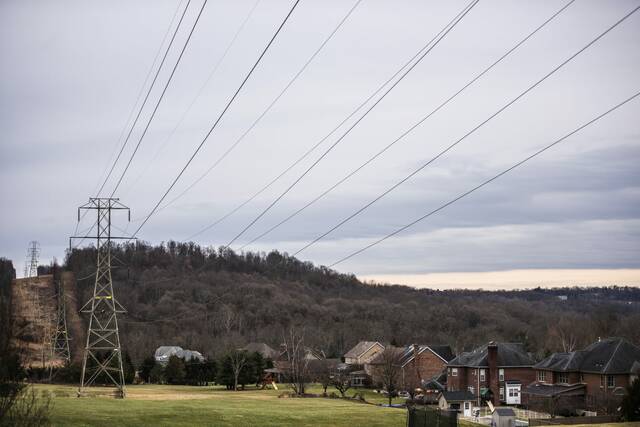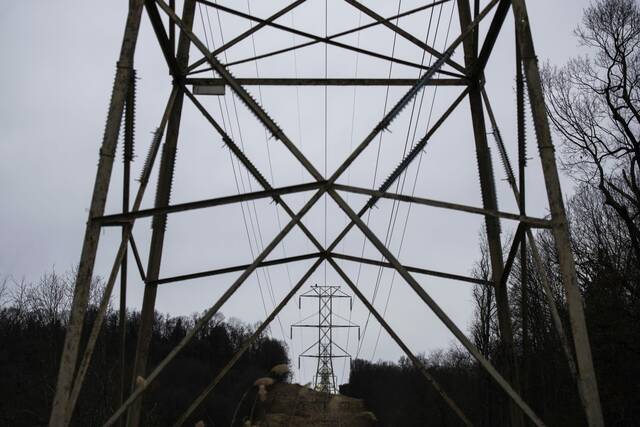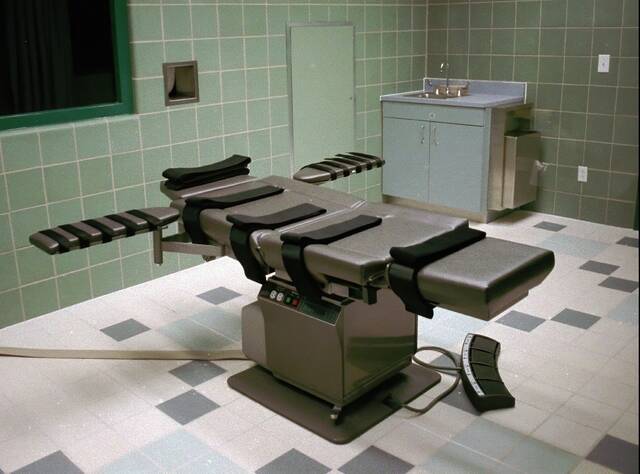Pennsylvanians, along with a lot of other people, will see higher electric bills this summer. But don’t blame your local power company just yet.
Soaring “capacity costs” are the culprit, and they’re largely out of the control of entities like West Penn Power and Duquesne Light. Not even the state’s Public Utility Commission gets a say.
Rather, capacity costs are the domain of PJM Interconnection, an often overlooked body known as a regional transmission organization tasked with balancing electricity supply and demand behind the scenes.
PJM was thrust into the spotlight in December after announcing the upper limit of capacity costs will increase by nearly 90% for most of its 13-state network, which encompasses much of the Mid-Atlantic and Midwest.
Gov. Josh Shapiro took PJM to task for the planned hike in a complaint filed with the Federal Energy Regulatory Commission, resulting in a tentative agreement for a 21% rise in the capacity cost ceiling.
Because PJM operates in multiple states, it’s not under the jurisdiction of Pennsylvania’s PUC, leading Shapiro to appeal to federal regulators.
But his actions won’t change what was set in motion in July, when PJM’s annual capacity auction saw power plants garner a more than 800% increase in the price for generating electricity.
As the power grid manager, PJM holds auctions where power generators set their prices for supplying electricity. The lowest bidders earn a contract, which essentially states they’ll supply power when called upon.
The goal is for PJM to ensure there is enough electricity to meet demand during peak times, like the late January cold snap that led to three of the network’s six highest-demand winter days ever.
Most electricity generation capacity can’t be summoned in an instant, so PJM holds these auctions months or, ideally, years ahead of when it predicts power will be needed.
The capacity contracts between PJM and power producers inked in July won’t fully kick in until June.
Seem complicated? That’s because it is, said Andrew Tubbs, president and CEO of the Energy Association of Pennsylvania.
But at least a cursory understanding of capacity costs can help make sense of ballooning bills.
“While it seems sort of esoteric and ‘out there,’ it does directly impact the customer,” Tubbs said.
How much will bills rise?
PJM, in effect, sets the maximum power plants can charge for their energy in terms of dollars-per-megawatt per day. That’s a measure of the cost of reserving a megawatt of capacity over a 24-hour period.
This ceiling moves with supply and demand each year. The idea is that, in times of low supply, high demand or both, rising capacity costs will make it profitable for more power plants to join the fray, adding power to the system and bringing the market back to equilibrium.
At the 2023 auction, power producers fetched about $29 per-megawatt per day. Last year, that charge jumped to nearly $270 per-megawatt per day.
Negotiations between Shapiro and PJM produced a $325 per-megawatt per day maximum for the next two auctions, hopefully limiting future price hikes.
These numbers may be eye-popping, but the end result for consumers is closer to cumbersome than crippling.
The typical West Penn Power residential customer — including parts of Allegheny, Westmoreland, Armstrong, Butler, Fayette and Washington counties — uses 1,000 kilowatt-hours per month.
They will owe an additional $17 on their bills, according to the company, or about $204 per year.
Ratepayers in Tarentum, one of 35 boroughs in the state that own and operate their own electricity distribution system, have seen 12% higher bills since January, according to borough Manager Dwight Boddorf.
For the average residential customer in the borough, who uses about 670 KWh-month, the increase equates to another $12 a bill, or $144 over the course of the year.
Duquesne Light, serving most of Allegheny and Beaver counties, calculated their average residential customer uses 600 kilowatt-hours per month, meaning they expect their bills to rise by $10, or about $120 a year. Customers who buy their electricity from Duquesne Light, rather than an alternative provider, like Green Mountain Energy, have had their hikes phased since September.
Who is to blame for rising prices?
Power companies stressed in their statements to TribLive they make no profit from generation charges — the portion of electric bills that includes capacity costs. That means, at least in theory, rising auction prices will burden consumers in PJM’s network equally, regardless of who handles local power distribution.
PJM, too, insists they have no profit motive in raising the capacity cost cap. As previously mentioned, the grid operator’s mission is to efficiently manage demand and spur a market response when more electricity is needed.
Pennsylvania’s power plants started moving toward independent ownership in the 1990s, when the state broke up vertically-integrated utilities amid a market overhaul.
No electric company in the state is still in the power generating business, according to Tubbs, of the Energy Association of Pennsylvania.
For instance, a 556-megawatt, natural gas-fueled power plant in Springdale Township is owned by Aspen Generating through its affiliate, LS Power. West Penn Power’s parent company sold the plant to Aspen in 2017.
Instead of selling directly to utilities, these facilities sell their power a regional grid manager, like PJM, through auctions.
The number of power plants, though, is dwindling, according to PJM spokesman Jeffrey Shields, which allows the remaining power plants to charge more for their energy.
He also cited heightened demand and recently implemented, FERC-approved market reforms as reasons for the last two capacity cost hikes.
“The market is sending a price signal that should (encourage) investment in resources,” Shields said.
The Federal Energy Regulatory Commission declined to comment due to pending proceedings with PJM.
In his filing with federal regulators, Shapiro didn’t quite see PJM as blameless.
“Under current conditions, the design of PJM’s capacity market permits scant differences in supply to whiplash the market between soaring and cratering prices,” the complaint stated.
Generators can’t make informed decisions in this climate, it continued, while “no consumer paying resulting double-digit bill increases can feel more confident in having secured a more reliable grid as a result.”
In a statement to TribLive, Shields defended the capacity market as ensuring a reliable power flow and removing inefficient power generators from the market.
Altogether, the grid operator creates annual savings between $3.2 billion and $4 billion, Shields said, as compared to forcing individual power companies to negotiate directly with power generators.
What is being done to prevent future increases?
While at odds over the efficacy of the capacity market, PJM and Shapiro seem to agree that more power plants are urgently needed.
In a news release responding to the governor’s complaint, PJM claimed to be approving projects at a record pace.
The delays, according to PJM, are coming from slow state permitting, financing issues and supply chain snags.
Shapiro, for his part, announced late last month his plans to offer hundreds of millions of dollars in tax breaks for projects that feed electricity into the grid and use hydrogen.
Dubbed the “Lightning Plan” — a nod to Benjamin Franklin — Shapiro’s vision would allow new power plants to qualify for up to $100 million in tax credits a year for three years, depending on capacity.
He also called for the creation of the Pennsylvania Reliable Energy Siting and Electric Transition Board, which would bring Pennsylvania into line with most states that have an agency dedicated to fast-tracking permitting and supporting energy projects.
All this comes against the backdrop of expanding industries, like artificial intelligence companies, that require sprawling data centers full of servers, network equipment and cooling systems — all using enormous amounts of electricity.
“I think it’s unfortunate that the governor’s complaint was necessary, but I do believe the governor’s engagement highlights the importance of the resource adequacy issue,” Tubbs said.













